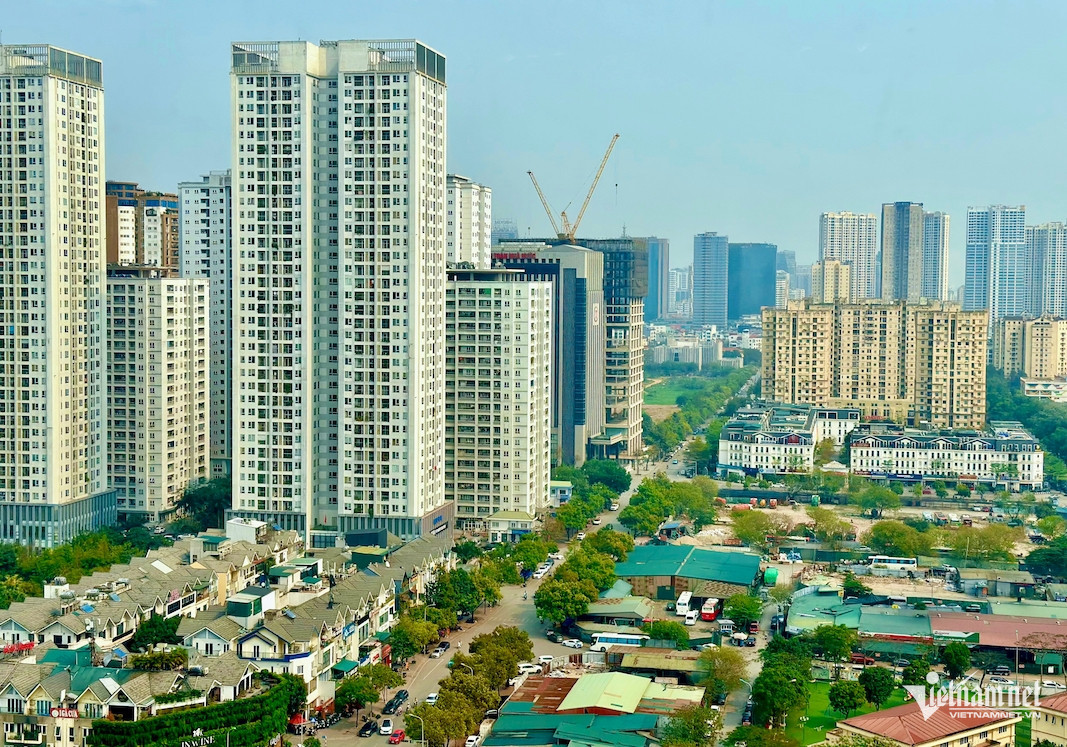
Savills Vietnam’s survey of over 400 projects showed that the average secondary (resale) apartment price in the first quarter 2025 was around VND60 million per sq m, down 1 percent quarter-on-quarter, varying by project.
Conversely, primary (first-time sale) apartment prices continued to rise. Over the past five years, they’ve increased by an average of 22 percent annually, now averaging VND79 million per sq m.
Notably, Dong Anh recorded the highest primary price growth, 42 percent year-on-year, followed by Tay Ho with 40 percent. Tay Ho also leads primary market in prices, averaging VND185 million per sq m.
Data from some real estate listing platforms showed that Hanoi’s apartment market began slowing in late 2024, with asking prices and transaction volumes declining at many projects.
Compared to last year’s peak, several projects saw price drops of 2-5 percent, including Hanoi Paragon, Mipec Rubik 360 (Cau Giay district), Masteri West Heights, Imperia Smart City, The Zei My Dinh (Nam Tu Liem), and The Sparks (Ha Dong).
VietNamNet has found that since early 2025, Hanoi’s resale apartment market has seen significant price reductions, often by hundreds of millions of dong.
Two-bedroom and two-bathroom units, previously listed at VND4.2-4.3 billion, are now priced at VND4-4.1 billion each. Two-bedroom, one-bathroom units, commonly offered at VND3.7-3.8 billion, have dropped to VND3.5-3.6 billion.
An apartment in Thanh Xuan District, over 60 sq m with two bedrooms, is listed at VND4.8 billion, down VND400 million from early November 2024.
In Nam Tu Liem District, in late 2024, studio units were commonly priced at VND2-2.2 billion, but have been reduced by about VND200 million to just over VND1.9-2 billion.
Widespread price correction wave
Do Thu Hang from Savills Hanoi said apartment transfer prices are falling as investors adjust profit expectations to boost liquidity.
“With primary prices standing firmly high, buyers are turning to the secondary market for more affordable options,” she said.
Many investors, after reaching profit goals in earlier phases, are now revising their strategies, accepting narrower margins to improve liquidity and redirect capital to more suitable markets. This contributed to the wave of price adjustments in the secondary market.
Hang noted that the correction is no longer localized but widespread, reflecting clear pressure to rebalance supply and demand. However, current reductions aren’t attractive enough to spark a strong transaction surge between sellers and buyers.
Thus, Savills believes that the secondary market prices will continue to decline in the coming period, especially as buyers gain more options and the market becomes more flexible.
For primary apartment prices in Q2 2025, the expert believes price drops are unlikely, but sharp increases are also improbable.
About the prospects in 2026, Savills expects downward trends in primary prices as realtors resume Class C projects, which are currently scarce.
“The resupply of apartments under VND2 billion helps the market get closer to real demand, creating a sustainable balance between supply and demand,” said Hang.
Meanwhile, a Hanoi real estate firm leader cautioned about some owners and brokers using “loss-cutting” tactics to attract buyers.
In reality, many owners, who bought apartments years ago at lower prices, may have lower-than-expected profits, but won’t incur losses. “Buyers should stay sharp, carefully assess finances, and choose the right time to invest,” he said.
The first quarter report from the Vietnam Association of Realtors (VARS) highlighted a severe imbalance in the housing supply structure.
The market saw about 14,500 new products launched, half the volume from late last year. Of these, 58 percent were high-end and luxury units, up 11 percent from the same period last year. The supply mainly came from large urban projects on the outskirts of Hanoi, HCMC, and nearby provinces.
The share of affordable housing (including social housing) improved slightly, accounting for nearly 13 percent with about 2,000 products, but remains far below actual demand.
VARS noted that the price surge for apartments in Hanoi primarily stems from increasingly expensive new launches. Meanwhile, some projects’ resale prices on the secondary market have stabilized after a period of rapid increases.
A mini survey conducted by VietNamNet in late April on whether to buy a house in the current market, showed that 80 percent of participants chose to wait, while 16 percent opted to buy immediately.
Hong Khanh